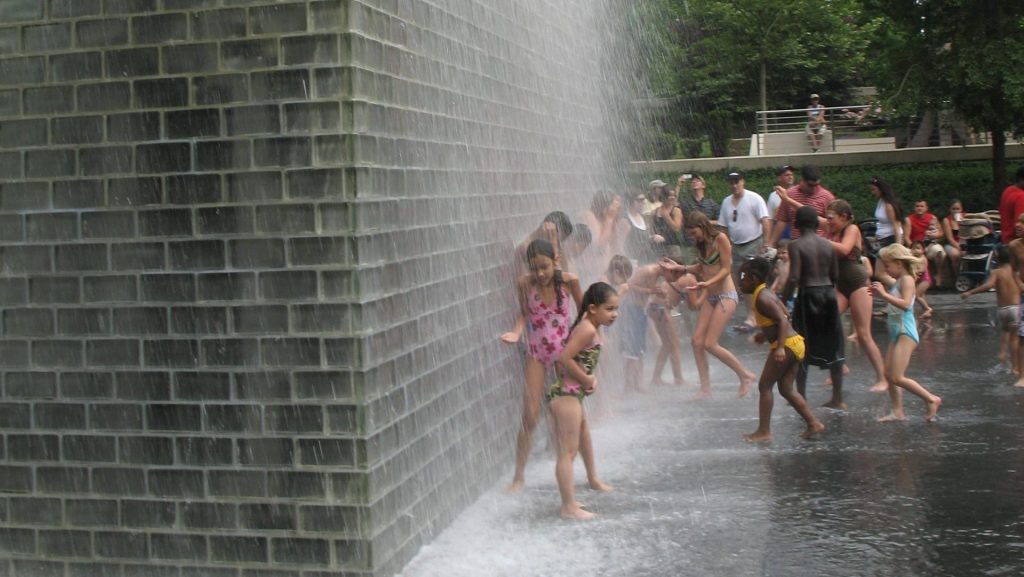
Public water features
Commitment

Summary
Public water features provide cooling and hydration to people during heatwaves. Examples include hydration stations, drinking fountains, urban rivers, and recreational water features.
Implementation
Incorporate water feature installation requirements into City plans or update existing water features for use during extreme heat.
Considerations for Use
Water features may raise humidity. Building water features is ideal for areas with air movement and dry air. Areas that are drought-sensitive may consider spray parks over pools/larger bodies of water. Cities that use sprinklers to irrigate parks can publicize times to allow children to play. Regular maintenance and monitoring is required in order to manage water quality and consumption. Cities should conduct water quality checks, safety reviews, and provide adequate signage. Create a map to identify public water structures and share relevant information.
Overview
Climate:
Cold, Hot/Dry, TemperatePolicy Levers:
CommitmentGovernments set ambitious goals or targets to guide prioritization and investment.Trigger Points:
City planning processesIncludes city initiatives such as the development of climate action plan, pathway to zero-energy, master plan, transit plan, energy mapping etc.Preparatory measures (actions to establish authority to act)Actions to establish/ensure the authority to act when appropriate trigger-points occur.Intervention Types:
Green/natural InfrastructureSectors:
Informal Settlements, Parks
Case Studies
Impact
Target Beneficiaries:
Heat-vulnerable communities, ResidentsPhase of Impact:
Risk reduction and mitigationMetrics:
Number of community members with access to features, Number of water features per area
Implementation
Intervention Scale:
SiteAuthority and Governance:
City governmentImplementation Timeline:
Short-term (1-2 Years)Implementation Stakeholders:
CBOs, City governmentFunding Sources:
Grants and philanthropy, Public investmentCapacity to Act:
High, MediumBenefits
Cost-Benefit:
MediumPublic Good:
MediumGHG Reduction:
N/ACo-benefits (Climate/Environmental):
N/ACo-benefits (Social/Economic):
Build social cohesion, Improve human health, Improve the public realm
